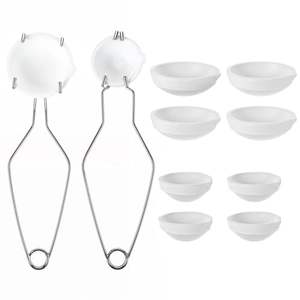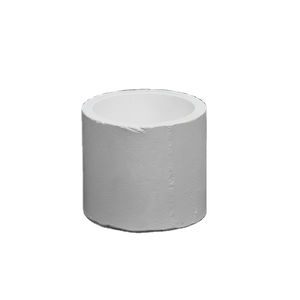Professional industry ceramic supplier, silicon nitride, silicon carbide, aluminum nitride and any other kinds of ceramics.
PRODUCT PARAMETERS
Description
Overview of Alumina Ceramic and Zirconia Ceramic Labware Crucibles
Alumina Ceramic and Zirconia Ceramic Labware Crucibles are specialized containers designed for withstanding extremely high temperatures in laboratory and industrial settings. They are essential for processes such as melting, calcining, and heat-treating a wide variety of materials, including metals, glasses, and chemicals. Our crucibles are engineered for superior thermal stability and chemical resistance, ensuring purity and reliability in the most demanding applications.
Features of Alumina Ceramic and Zirconia Ceramic Labware Crucibles
-
Exceptional Thermal Shock Resistance: Withstands rapid temperature changes without cracking, ensuring durability and a long service life.
-
High-Temperature Stability: Maintains structural integrity at extreme temperatures, often exceeding 1500°C.
-
Excellent Chemical Inertness: Resists corrosion and reaction with molten metals, acids, and aggressive chemical fluxes.
-
High Purity & Low Contamination: Manufactured from premium materials to prevent sample contamination during sensitive processes.
-
Optimized Thermal Properties: Designed for efficient heat transfer and consistent performance in furnace environments.
-
Robust Mechanical Strength: Offers good resistance to physical impact and abrasion during handling and use.
Specifications of Alumina Ceramic and Zirconia Ceramic Labware Crucibles
Alumina ceramic crucibles work well for lab use. They resist very high temperatures. Alumina handles heat up to 1700°C easily. This makes them good for melting things or high heat tests. They also fight off chemicals well. Acids and bases usually don’t hurt them. That means you can use them with many different chemicals safely. Alumina crucibles are strong. They handle physical stress better than some other ceramics. They come in different purity levels. Higher purity alumina lasts longer against heat and chemicals. It also keeps its shape better under stress. These crucibles are good for everyday lab jobs.
Zirconia ceramic crucibles are another option. Zirconia is very tough. It is harder to break than alumina. This toughness helps against bumps and drops. Zirconia also resists wear very well. It stays smooth inside for a long time. Zirconia crucibles resist high temperatures too. They are fine up to about 1500°C. That covers many lab heating tasks. They are not great with some acids. Avoid using them with strong acids. Zirconia has lower heat conductivity. This means heat spreads slowly through the material. It can be useful for certain tests. Zirconia is heavier than alumina. Keep that in mind.
Choose alumina for top heat resistance and chemical fighting. Pick zirconia when you need extra toughness and wear resistance. Both materials are strong choices for lab crucibles. They last long under tough conditions.
Applications of Alumina Ceramic and Zirconia Ceramic Labware Crucibles
Alumina ceramic and zirconia ceramic labware crucibles are essential tools in demanding laboratory settings. These crucibles handle extreme heat very well. They resist chemical attack from many substances too. This makes them perfect for high-temperature applications where other materials fail.
Alumina crucibles are widely used. They are made from aluminum oxide. They work reliably at temperatures up to 1700°C. This is great for melting metals, preparing glass samples, and sintering powders. Alumina is strong and hard. It withstands wear over time. These crucibles are a common choice for everyday lab tasks involving intense heat.
Zirconia crucibles offer different advantages. They are made from zirconium dioxide. Zirconia has very low thermal conductivity. This means it doesn’t conduct heat well. It also has excellent thermal shock resistance. A zirconia crucible can handle sudden, big temperature changes without cracking. This is crucial for certain experiments. It is ideal for processes involving rapid heating or cooling cycles. Zirconia is also very tough mechanically.
Both types are chemically inert against many acids and bases. This protects your samples from contamination. They are stable in oxidizing atmospheres. They won’t react with your materials. You get clean, reliable results. These crucibles last much longer than cheaper alternatives. They save money over time. They are used in research, quality control, and production. Industries include metallurgy, chemistry, materials science, and electronics. You find them melting alloys, ashing samples, or growing crystals.
Company Profile
Tanki New Materials Co.Ltd. focus on the research and development, production and sales of ceramic products, serving the electronics, ceramics, chemical and other industries. Since its establishment in 2015, the company has been committed to providing customers with the best products and services, and has become a leader in the industry through continuous technological innovation and strict quality management.
Our products includes but not limited to Aerogel, Aluminum Nitride, Aluminum Oxide, Boron Carbide, Boron Nitride, Ceramic Crucible, Ceramic Fiber, Quartz Product, Refractory Material, Silicon Carbide, Silicon Nitride, ect. please feel free to contact us.

Payment Methods
T/T, Western Union, Paypal, Credit Card etc.
Shipment Methods
By air, by sea, by express, as customers request.
5 FAQs of Alumina Ceramic and Zirconia Ceramic Labware Crucibles
Alumina ceramic and zirconia ceramic labware crucibles handle high temperatures and tough chemicals. People often have questions about choosing and using them. Here are five common ones.
What’s the main difference between alumina and zirconia crucibles? Alumina is cheaper. It handles very high heat well. Zirconia is tougher. It resists cracks better. It’s stronger mechanically. Pick alumina for very high temperatures. Pick zirconia for extra strength.
How hot can these crucibles get? Alumina crucibles usually go to about 1700°C. Some special grades reach higher. Zirconia crucibles handle around 1600°C. Check the exact specs for your crucible. Don’t exceed the limit. It could break.
Do they resist acids and bases? Yes, both resist corrosion well. Alumina handles strong alkalis better. Zirconia handles strong acids better. They won’t react with most chemicals. This keeps your samples clean.
How do I clean them? Cleaning is simple. Use common lab cleaners like acids or bases. Rinse well with water afterward. Avoid sudden temperature changes. Let them cool down slowly. This stops cracks.
Why does zirconia cost more than alumina? Zirconia costs more to make. The raw materials are pricier. The processing is harder. You pay more for the extra toughness and strength. It’s worth it for demanding jobs.
REQUEST A QUOTE
RELATED PRODUCTS
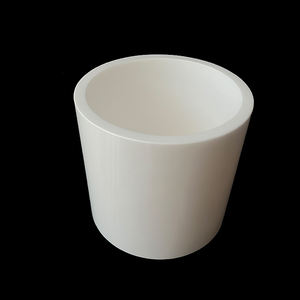
Ceramic Crucible D12*25*1.3mm

Lab glassware Ceramics Core Crucible 30ml 40ml 60ml G1 G2 G3 G4 G5 Crucible Filter Sand Core Crucible

High Heat Resistant 95% Alumina 99% Alumina Ceramic Crucible
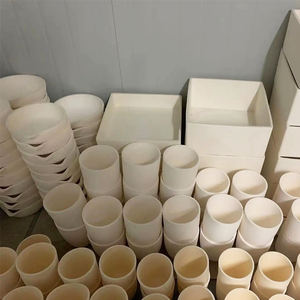
Lab Melting Used Fused Silica Quartz Sio2 Ceramic Crucible
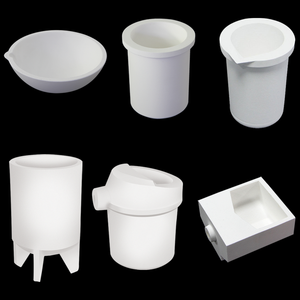
High Temperature 99.7% Al2O3 Alumina Ceramic Corundum Crucibles Industrial Ceramic Application Bending Cutting Processing
